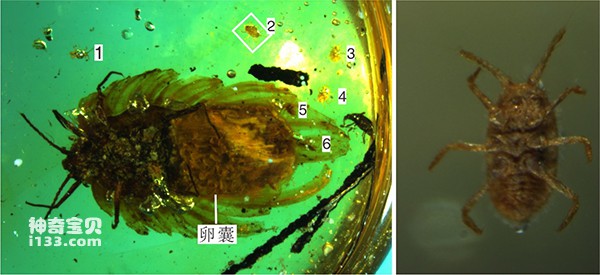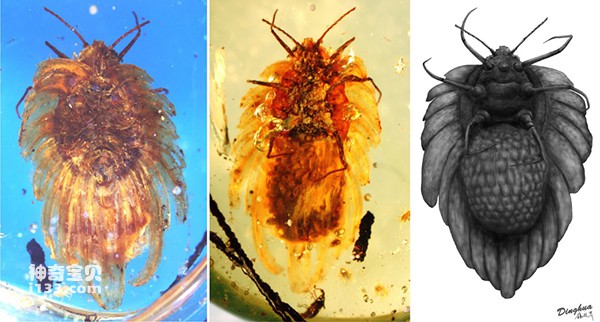Parenting behavior is the behavior of animal parents taking care of their eggs and young, which can improve the survival rate of their offspring. This behavior is widespread in animals, including mammals, birds, reptiles, and insects. Because behavioral evidence from animals is difficult to preserve as fossils, our understanding of ancient child rearing behavior is very limited.
Insects are the most abundant group in the biological world. Parenting behavior is widespread among insects, and its origin may also be very ancient. But fossil evidence for insect behavior itself is scarce, and finding direct evidence of nursery behavior is like looking for a needle in a haystack. In 2012 and 2014, two articles published in the Proceedings of the National Academy of Sciences (PNAS) respectively revealed evidence of the nursery behavior of Mesozoic thrips and fossil beetles. However, ancient insect nursery behavior is mainly based on fossil morphological speculation or indirect inference from living insect systematics. Direct fossil evidence has previously only been found in Cenozoic amber.
Recently, an international collaboration team led by researcher Zhang Haichun from the Nanjing Institute of Paleontology conducted a systematic survey of more than 200,000 Burmese insect amber specimens collected in domestic and foreign collections. Team member Associate Researcher Wang Bo collaborated with Mr. Xia Fangyuan from Shanghai and others to discover one of the ambers. behavioral evidence of scale insect larvae. Scale insects belong to the order Hemiptera and some species are important agricultural pests, usually sucking plant sap. The male has a pair of wings, well-developed legs and antennae, and no mouthparts. Females are wingless, the legs and antennae of most species are degenerated, and the body is covered with a waxy scale shell. The Mesozoic scale insect fossil record is relatively rich and widely appears in Lebanese amber, Burmese amber and New Jersey amber in the United States. However, most of the fossils are male insects with wings, and a small number are female larvae. No female adults have yet been reported. Therefore, this fossil not only represents the earliest direct evidence of insect nursery behavior, but also the earliest record of a female adult of a scale insect.
This piece of amber preserves a female adult with an enlarged egg sac at its tail. The egg sac contains about 60 hatched egg shells and unhatched eggs. In addition, six newly hatched first-instar larvae were preserved in the lower part of the egg sac and on the outside of the body. Female adult scale insects generally live on various plants, and their backs are covered with secreted wax flakes to protect themselves and their offspring. This scale insect belongs to the crown group of the family Gryllidae, and many extant species of the family Gryllidae also have similar nursery structures and behaviors. Interestingly, some distantly related groups of scale insects behave similarly. This study shows that scale insect larvae-nurturing behavior originated at least 100 million years ago, showing a long-term stagnant evolution. Further systematic investigation found that larvae-nurturing behavior may have already appeared in the ancestral group of scale insects. This behavior greatly improves the reproductive success rate of this type of insect and may be an important factor in the early radiation evolution of scale insects.
The research results were recently published online in the internationally renowned publication eLife. Professor Ian Baldwin, an academician of the American Academy of Sciences and the Institute of Chemical Ecology of the Max Planck Society in Germany, wrote a recommended article, saying that this study provides "the earliest evidence of the co-preservation of insect eggs, larvae, and adults, and provides a basis for studying the evolution of scale insect larvae behavior." valuable clues.”
Related information about the paper: Wang Bo,

Pictures of fossilized adults and larvae

Restored pictures of the back, ventral and ventral surfaces of fossils

Adult adult scale insects
animal tags: amber
We created this article in conjunction with AI technology, then made sure it was fact-checked and edited by a Animals Top editor.